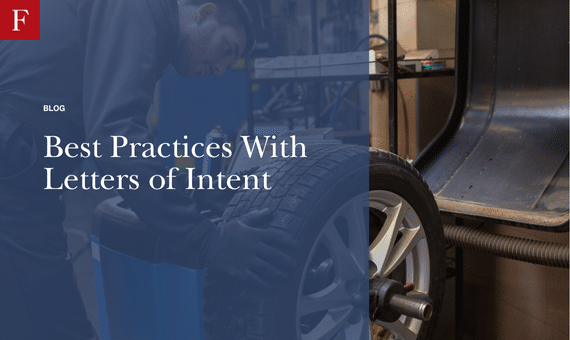
Best Practices With Letters of Intent
Last month, I explained how we find it more effective to employ a two-stage sale process that involves first getting indications of interest (IOIs) from as many buyers as we can and then narrowing the buyer pool by inviting them to submit formal letters of intent (LOIs).
Our process works much like a funnel.
We first assemble a target list of strategic buyers and private equity groups that have an interest in the type of business we are representing. For a recent tire dealership out west, the final approved list had over 200 targets that we reached out to.
Along with this CIM, we typically send a process letter, which describes when we expect to receive IOIs and then more formal and comprehensive LOIs.
An LOI is a crucial document that outlines the basic terms and conditions of the transaction. While not legally binding, the LOI sets the stage for the detailed purchase agreement and due diligence that follows.
Having a clear and comprehensive LOI can help prevent misunderstandings, streamline the negotiation process and lay a strong foundation for a successful transaction.
The LOI should clearly state its purpose: to outline the preliminary understanding between the buyer and seller. It should specify that except for certain binding provisions — such as confidentiality, exclusivity and governing law — the LOI is non-binding and subject to the execution of a definitive purchase agreement.
While the LOI is a preliminary document, it should still cover all critical aspects of the deal. This includes the purchase price, structure (whether it’s a stock or asset deal), terms and any contingencies that must be met. Additionally, it should outline the steps that will follow, such as due diligence and the expected timeline for closing the transaction.
Confidentiality is vital in M&A transactions, so the LOI should include a confidentiality clause that protects both parties when disclosing proprietary information during the negotiation process and afterwards.
An exclusivity clause, often referred to as a “no-shop” provision, is commonly included in LOIs to prevent the seller from negotiating with other potential buyers for a specified period. This allows the buyer to invest resources in due diligence, without the risk of being outbid in the process.
The LOI should outline the scope and timeline of the due diligence process.
An LOI should be written in clear, concise language that is easy for both parties to understand. While legal jargon is necessary for certain provisions, the overall tone of the document should be straightforward. This minimizes the risk of misinterpretation and helps both parties stay focused on the key issues. Only experienced attorneys should be used when crafting or reviewing LOIs.
It’s important to remain flexible during the LOI stage and beyond. While the LOI sets the foundation for the transaction, it is not the final agreement. There may be adjustments to the terms of the deal. Being open to renegotiating certain aspects of the LOI can lead to a smoother transition process.
A well-crafted LOI is an essential step in the M&A process that helps establish a clear framework for negotiations and due diligence. By following these best practices, parties can mitigate risks, manage expectations and set the stage for a successful transaction.
This article was previously published on Modern Tire Dealer.













